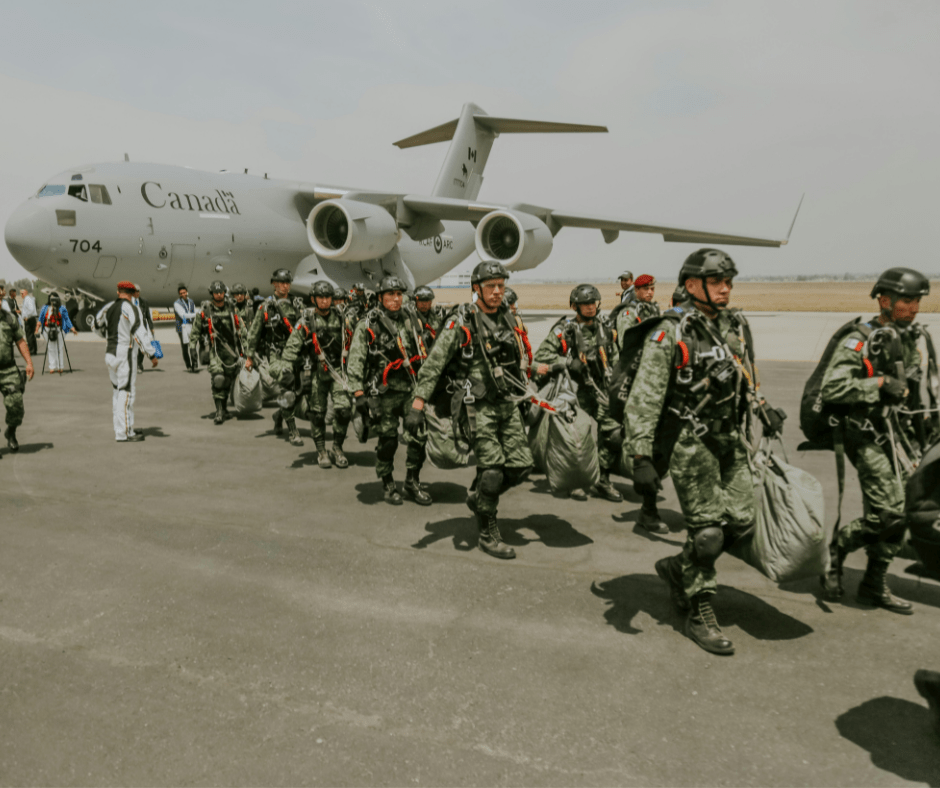Summary: Military drone detection is a dynamic, high-risk challenge, blending technology, tactics, and regulation. As drone threats evolve, so must military responses. The U.S. military uses military drone detection systems to counter small UAS (sUAS) threats that range from casual incursions over bases to weaponized drones on the battlefield.
Multi-layer architectures combine Remote ID, RF sensing, radar, EO/IR, and acoustic technologies so that both compliant and stealthy drones can be detected. With mobile deployment and high-mobility teams in mind, military drone detection must be portable, discreet, and able to function without fixed infrastructure.
Not all sUAS threats come against the military in foreign states or in conflict zones. The United States and other governments report increased numbers of unauthorized sUAS traveling through restricted airspace over military bases and government installations. Although most of these incidents can be blamed on clueless sUAS pilots unaware of restrictions, they are not all benign. However, it’s just as important to know about the seemingly benign as they may unknowingly cause information leakage.
In 2025, U.S. military leaders highlighted the growing challenges posed by small drones in both base security and warfighting. General Gregory Guillot, commander of NORAD and U.S. Northern Command, reported over 350 drones at more than 100 military sites last year. He noted that some appeared to conduct surveillance of sensitive facilities and called for expanded authorities to counter such threats. General James Rainey, head of the U.S. Army’s Futures Command, warned that small drones are rapidly changing the battlefield, giving adversaries like Russia an edge in UAV capabilities, and criticized the Pentagon for lagging in countering emerging drone and electronic warfare threats. Their statements underscore that while small drones offer tactical advantages, they also create significant operational and security challenges, making military drone detection a top priority.
Clueless or careless pilots flying over Air Force bases and sUAS armed with explosives highlight present dangers, driving rapid advances in military drone detection technology. You may have heard the phrase “army of drones” in the context of the Ukraine/Russia conflict. Both sides have demonstrated tremendous success using sUAS for surveillance and explosive payloads in combat.
The Rising Danger from Above
Unauthorized drones over U.S. bases aren’t just nuisances—they pose a real safety hazard. FAA-commissioned research shows that drone impacts can inflict more severe damage than bird strikes. Adversary sUAS pilots use sUAS to track troop movement, study tactics, and drop explosives. Simple aerial photography can reveal sensitive information.

Military Drone Detection Solutions
Government and military forces stop sUAS threats by detecting and tracking unauthorized drones and their pilots. To achieve this, they use military drone detection systems that employ technologies such as RF sensing to quickly identify sUAS and alert personnel.
sUAS detection systems reliably help thwart threats, but the Department of Defense must also fight differently to stay ahead of rapidly advancing technology and nefarious actors.
The DOD strives for multilayer solutions that eliminate single points of failure in everything they do. Drone detection is no different.
A multilayer RF solution combines detection methods for comprehensive airspace awareness. One layer uses Remote ID broadcasts, required by federal law for most drones. Another uses RF sensing to detect drones that intentionally disable broadcasts, often flown by highly skilled operators. Acoustic detection or other sensors can be added for drones that emit minimal RF signals. This approach ensures both compliant and potentially malicious drones are identified.
Military Drone Detection and Personnel on the Move
Government officials and military troops are constantly on the move inside and outside of their installations. The area of protection can change at a moment’s notice which highlights the need for mobile defenses.

Many military drone detection systems are bulky, costly, and cumbersome—like the one shown here. This removes any element of discreteness and draws attention to what traveling personnel greatly want to avoid.
Another complication to mobility is the need for an internet connection when setting up a system. This is why it’s important to consider all use cases when evaluating sUAS detection systems. You may need a system that can operate via a mesh network.
There are products on the market that solve these issues. Priced to be cost-effective, and designed to be much more discreet, while solving the internet availability issue, these products condense what takes the military an entire truck load into a small package that can be installed on any size vehicle, boat, or other transportation device, adding redundancy and reliability to force protection
Legal Landscape of Military Drone Detection Systems
You may think the US military can use any drone/sUAS detection system they want anytime, anywhere. Since 2018, government organizations, including the DOD, have had to apply for waivers allowing them to “crack the packet” or use mitigation systems. A small number of government departments can apply to receive waivers from the Wiretap Act, the Pen/Trap Statute, and other laws governing the interference with sUAS. The process to obtain these waivers is rather time-consuming, and a new waiver must be obtained when the sUAS detection system is moved from one location to another.
These waivers are set to expire Sept. 30, 2025, per the FAA Reauthorization Act of 2024. Many questions remain as to the future and potential expansion of these waivers to more agencies.
The government recognizes the need to regulate commercial sUAS technology but legislation often takes much longer than needed. The FAA requires all sUAS to broadcast a Remote ID, similar to the unique number registered to airplanes which helps monitor sUAS activity and track down those responsible for illegal sUAS use.
In addition to Remote ID, military and government agencies deploy multi-layered systems including spectrum sensing or radar detection technologies. Because most drones broadcast Remote ID by federal mandate at the manufacturer level, Remote ID provides a strong foundation for building layered drone detection and airspace awareness.
To learn more about drone detection, read The Ultimate Guide to Drone Detection here.
Military Drone Detection FAQs
What makes military drone detection different from civilian drone detection?
Military systems often deal with more adversarial and sophisticated threats—such as purpose-built drones, swarms, stealthy or enemy surveillance/attack UAS—so detection must cover lower signature, faster reactions, integrated with defense C2 (Command & Control) systems. (NDU Press)
Civilian systems might focus on hobby drones or unauthorized drones at airports or events; military systems also include threat classification, engagement readiness, and often mitigation/hard kill capability.
- RF (radio-frequency) detection is typically the first line of defense, as a foundation for a practical field/mobile drone detection system.
- Radar (especially Ku-band, mobile radars) to detect small UAS. (Potomac Officers Club)
- EO/IR (Electro-Optical/Infrared) imaging for visual/thermal confirmation.)
- Acoustic Sensors for low-signature drones, especially in cluttered environments.
What are the key challenges in detecting military drone threats?
- Detecting small, low-altitude drones with low radar cross section (RCS). (NDU Press)
- Differentiating friendly vs hostile drones, and non-threat drones vs weaponized ones.
- Operating in contested environments with RF jamming, clutter, or anti-sensor measures.
- Rapidly tracking, classifying, and responding to swarms or multiple simultaneous threats.
- Integrating with larger air-defense networks, C2 systems, and ensuring seamless response.
How is detection linked to mitigation in military drone defense?
Detection is the first step: you must locate and identify the drone. From there, you trigger classification (friend/foe) and then mitigation (electronic warfare, jamming, high-power microwaves, missiles) if authorized.
For example, systems like Mobile Low, Slow Small Unmanned Aircraft Integrated Defeat System (M-LIDS)employ both detection and defeat capabilities. (Wikipedia)
Without robust detection, mitigation may engage false targets or miss threats entirely.
What future trends are meaningful in military drone detection?
- Increased focus on detecting drone swarms and collaborative drones rather than individual craft.
- Directed-energy and high-power microwave options (for mitigation) rely on detection to cue engagement.
- Advanced machine-learning/AI methods for classification, using large datasets of drone behavior.
- More deployable, mobile systems suited for forward operating bases, expeditionary forces.
- Integration with broader battlespace networks (C4I, ISR, EW) and layered air defense.



